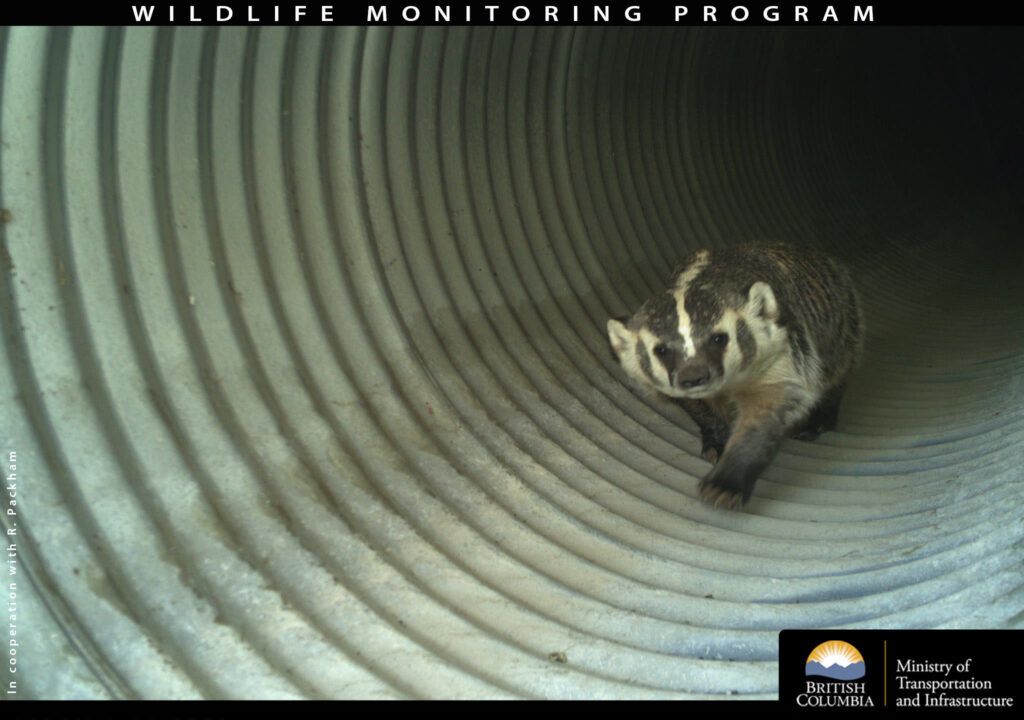Badgers &
Highways
Submit Sightings | Mortalities
Highways are the leading cause of badger mortality in British Columbia
Submit Sightings | Mortalities
Highways are the leading cause of badger mortality in British Columbia
Road mortality is at its highest during July, when road traffic peaks and male badgers are searching widely for mates
Highway mortality has been shown to be the most significant source of loss in badger populations in the Thompson Valley. In this area, almost half of the radio-tagged badgers monitored in a recent study died while trying to cross highways or railways; 46% (6 of 13) badgers radio-tagged from 1999-2002 were killed on highways (Weir et al. 2003). An additional 13 untagged badgers were reported road-killed during this period and numerous reports of narrow escapes also exist. Highway mortalities do not appear to be age related; both adults and young have been killed (Weir and Hoodicoff 2002). Considering that the population of badgers in this region is estimated to be between 30 and 50 animals, this source of mortality likely has severe implications for population persistence. In fact, the National Recovery Strategy for the North American Badger, jeffersonii subspecies has listed “reducing highway mortality”, as a primary short-term recovery objective.
The difficulty that badgers face is that their home ranges, while mostly based in grassland habitats, are very large and often straddle major transportation corridors. In their normal day-to-day movements throughout their 20 – 50 km² home ranges, they are forced to cross these roads and railways, which pose a major mortality risk to the individual badgers. The following graphic shows the locations of 17 documented road mortality of badgers in the Thompson region between 1998 and 2002. The most concerning stretch of road is the TransCanada Highway between Lafarge exit and Pritchard. No fewer than 7 badgers were killed on this section of road between 1999 and 2003, including a female that had recently given birth to a kit.
Like all great things (including ecosystems), our team is made stronger by diversity! We are a team made up of badger biologists, herpetofauna biologists, engineers, regional highway managers, highway contractors, program coordinators, and SAR implementation specialists.
